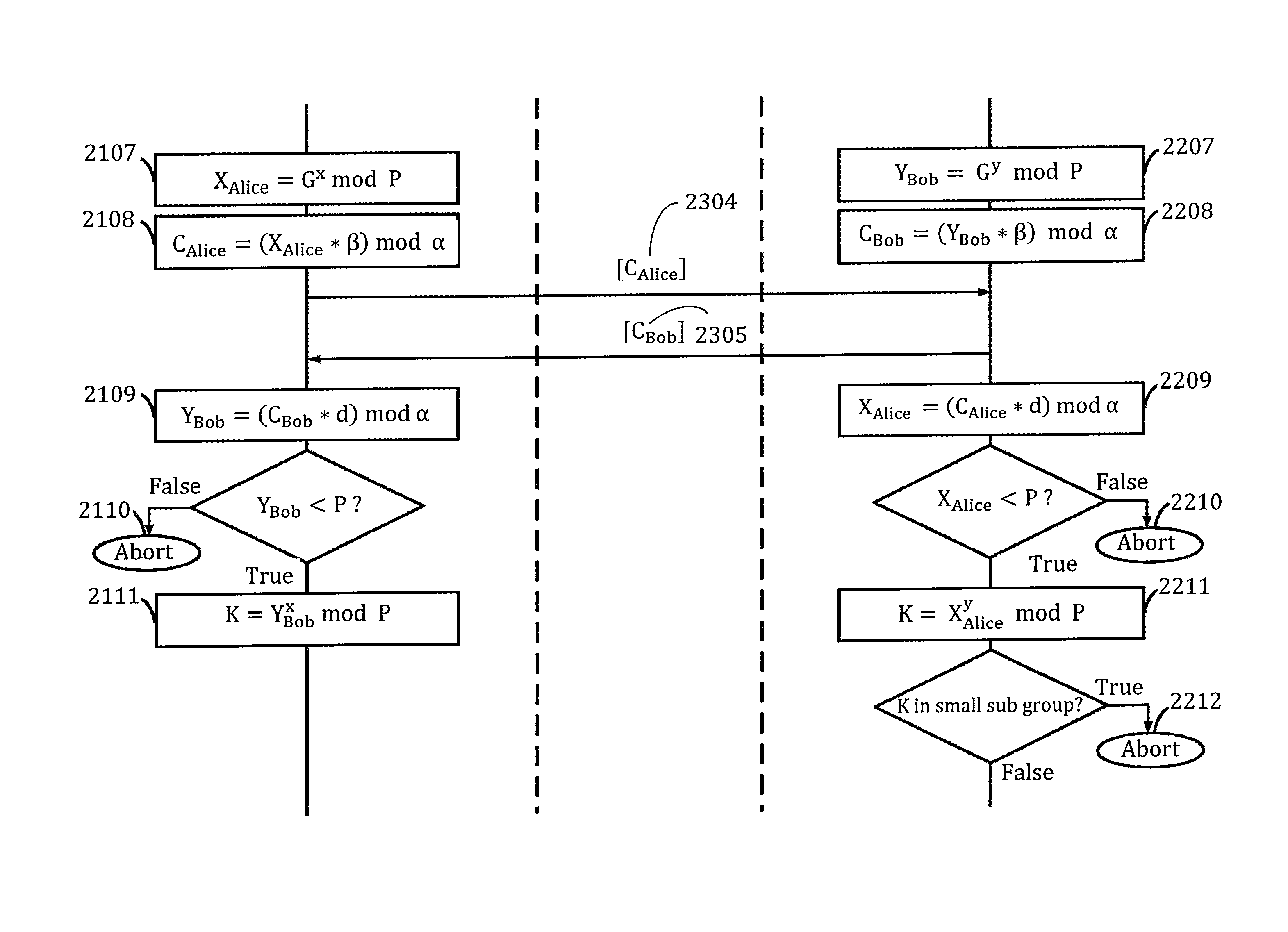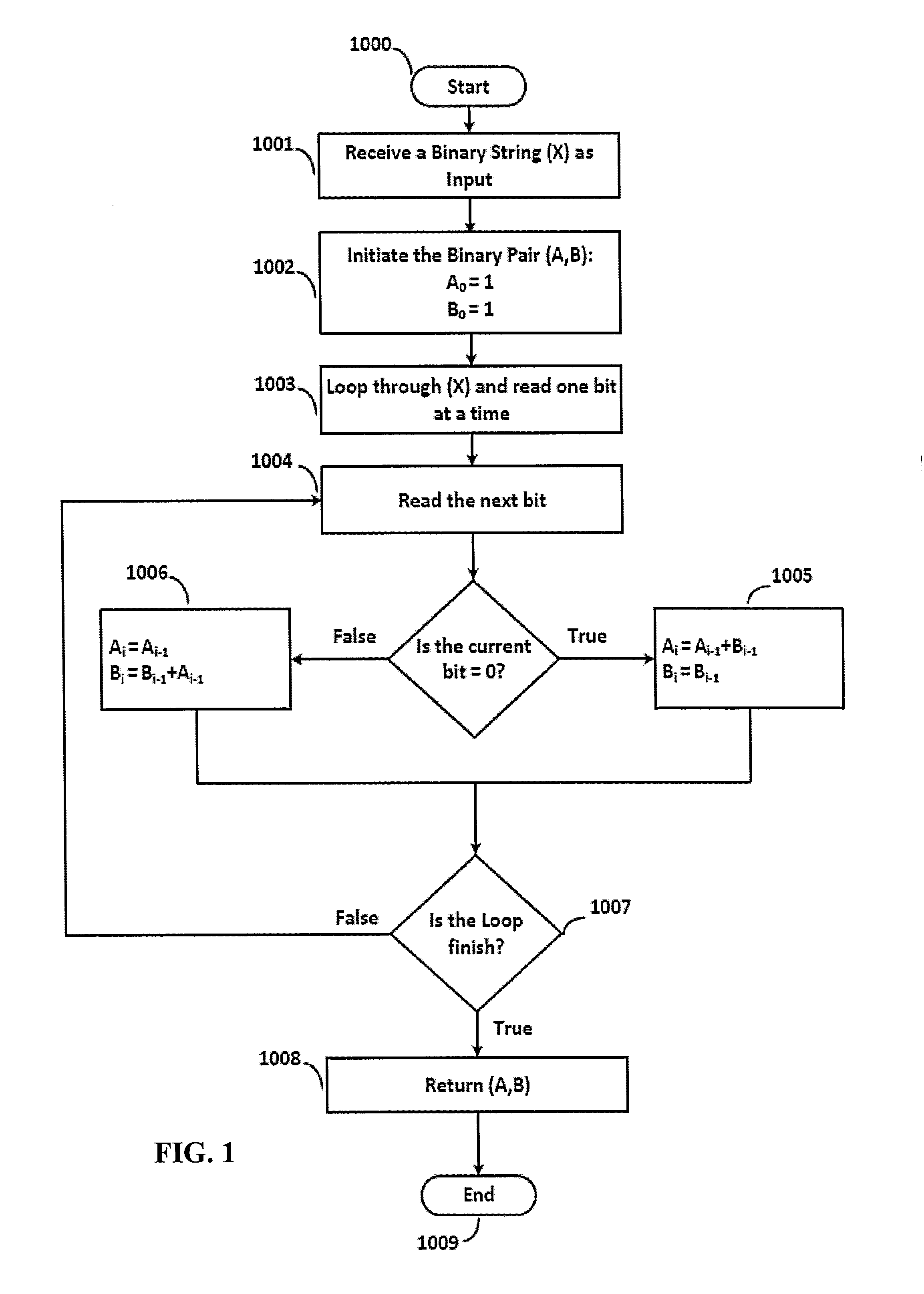Cryptographic method and system for secure authentication and key exchange
a cryptography and key exchange technology, applied in the field of secretkey/public key cryptography, can solve the problems of easy active and passive attacks, user identity/authority verification, and easy to choose bad passwords,
- Summary
- Abstract
- Description
- Claims
- Application Information
AI Technical Summary
Benefits of technology
Problems solved by technology
Method used
Image
Examples
Embodiment Construction
[0027]In order to thwart a MITM attack, DH key exchange can be implemented in conjunction with a public key cryptosystem, such as RSA (named for the authors of the algorithm, Ron Rivest, Adi Shamir, and Leonard Adleman) to verify the identities of the communication parties. The present disclosure performs authenticated DH key exchange, based on a shared secret without the need for a third party or a public key cryptosystem. The exchanged DH public keys are encrypted with a combination of a random string and the shared secret, whereas the basic DH method does not.
[0028]The challenge-response mechanisms and DH key exchanges described above are vulnerable to active and passive attacks. However, the present disclosure overcomes the security issues associated with the challenge-response mechanisms and DH key exchange described above by providing a challenge-based mechanism for establishing secure and authenticated communication between two parties who shared a secret in advance. The syst...
PUM
 Login to View More
Login to View More Abstract
Description
Claims
Application Information
 Login to View More
Login to View More - R&D
- Intellectual Property
- Life Sciences
- Materials
- Tech Scout
- Unparalleled Data Quality
- Higher Quality Content
- 60% Fewer Hallucinations
Browse by: Latest US Patents, China's latest patents, Technical Efficacy Thesaurus, Application Domain, Technology Topic, Popular Technical Reports.
© 2025 PatSnap. All rights reserved.Legal|Privacy policy|Modern Slavery Act Transparency Statement|Sitemap|About US| Contact US: help@patsnap.com



